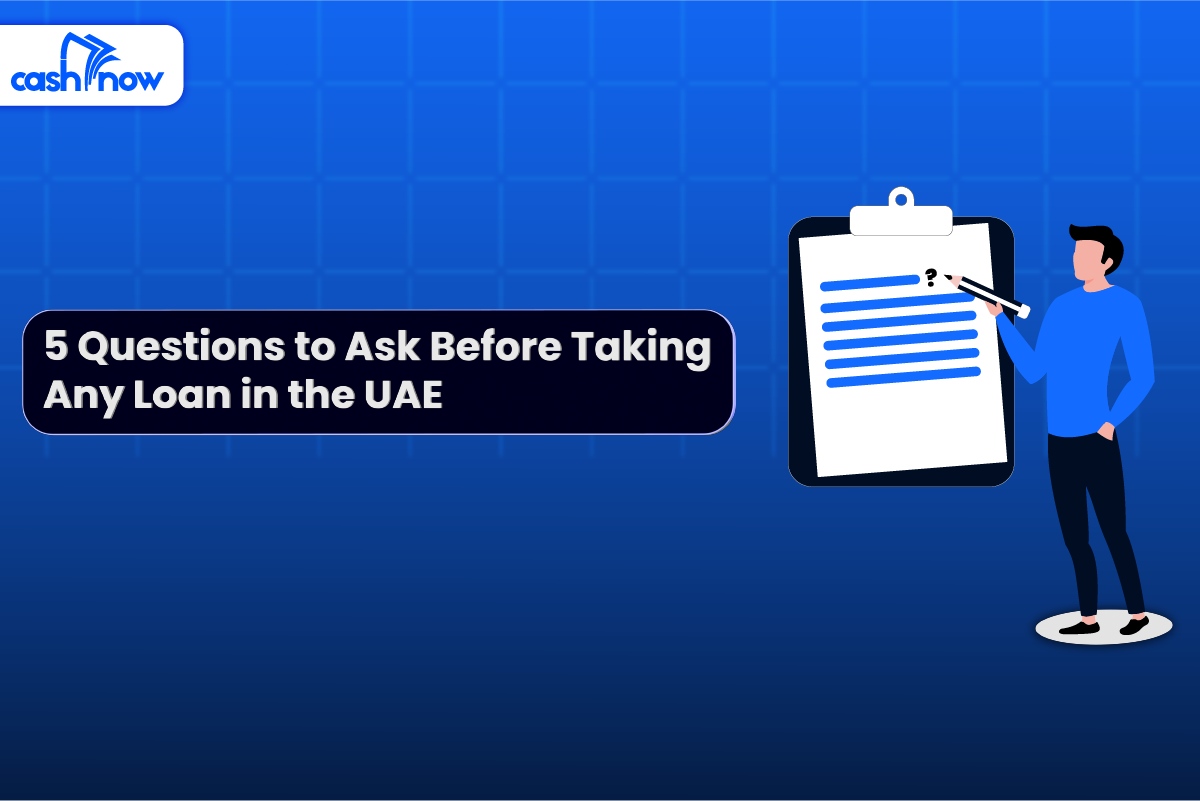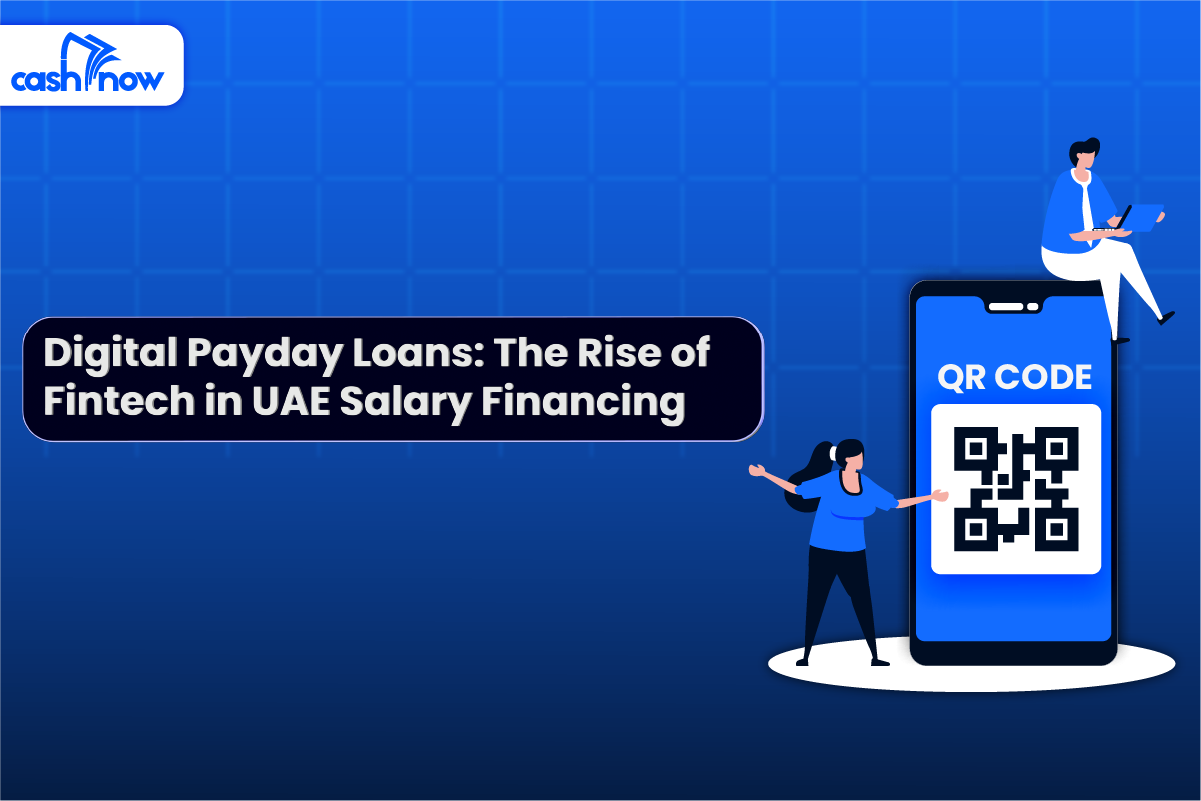Digital Microloans in UAE: How Technology Is Simplifying Borrowing

Meet the new face of lending, it is digital, instant, and available 24/7.
As digital adoption soars in the UAE and cashless transactions become the norm, financial support is also evolving. New-age FinTech players are introducing innovative loan products that match the pace of modern life.
Among this growing basket of digital offerings, microloans are quickly stealing the spotlight.
Microloans, traditionally used by individuals and small businesses to bridge short-term cash gaps, are now being reimagined for the digital age as a seamless alternative to traditional bank loans, especially for underserved populations like freelancers, low-income workers, and small business owners.
In this blog, we look at the growing popularity of digital microloans in the UAE.
What are digital microloans?
Digital microloans are small, short-term loans accessed entirely through digital platforms, typically via mobile apps. The entire process, from application to approval and disbursement, is paperless and streamlined, offering a fast, on-the-go borrowing experience.
As the name suggests, these loans are designed to meet immediate financial needs, usually ranging from a few hundred to a few thousand dirhams. They’re meant to be repaid over short durations, often within a few weeks.
What sets digital microloans apart from traditional lending is their speed and accessibility. They replace a conventional bank loan’s lengthy paperwork, credit checks, and in-person visits with a paperless process that happens within an application in just a few simple steps.
This doesn’t mean digital lenders skip background checks. They simply found alternative methods to access creditworthiness in real-time, like alternative data via mobile usage, salary history, or utility payments.
So, who are these loans best suited for? Primarily for low-income workers and expats who may lack a credit history or fall outside traditional income thresholds, groups that are often excluded from formal banking systems. They’re also ideal for anyone who needs urgent access to credit, since digital loans typically disburse funds within minutes rather than days.
Digital microloans are quickly becoming a go-to solution for those who need fast, hassle-free access to cash, reflecting a broader shift toward more flexible and tech-driven financial services in the UAE.
Why microloans matter in the UAE
There are millions who remain excluded from the formal financial system, particularly low-income workers, expats, and small business owners, simply because they don’t fit neatly within the eligibility terms laid down by banks. As a result, they’re often turned away when they seek financial support.
Many in these segments face hurdles like high income thresholds for opening bank accounts, lack of credit history, or limited access to formal financial services. So, they’re left to rely on informal lending channels or remittances just to manage everyday expenses or urgent needs.
Let’s check out some key trends that are driving the adoption of digital microloans in the UAE:
- A growing expat and freelance population - Over 88.5% of the UAE’s population consists of expatriates, most of whom are low-income earners or freelancers. So, a major portion of them do not meet the standard eligibility criteria of applicants to be a salaried employee with a minimum salary of AED 5000, making digital loans a great alternative.
- UAE’s push toward a cashless economy - The country is gearing towards a cashless future and promoting digital payments and financial technology initiatives. Microloans fit seamlessly into this ecosystem by offering digital-first lending solutions.
- High smartphone and internet penetration - The UAE boasts 99% internet penetration and widespread smartphone usage, providing the infrastructure needed to support mobile-based financial services, including quick loan applications and disbursals.
- Financial inclusion gaps - Because a major population of the UAE does not have access to normal lending, they are forced to turn to informal sources, highlighting the need for more accessible, regulated credit options.
All these factors combined make a strong case for why microloans are becoming essential, not only from a financial emergencies standpoint, but also as tools for everyday resilience and opportunity in a digital-first economy.
How technology is facilitating the digitization of lending
Here’s how technology is driving the digital microloan revolution in the UAE:
AI and machine learning
Credit assessment is no longer limited to traditional credit scores. Today, AI-driven systems analyze alternative data, like mobile phone usage, salary deposits, and spending behavior, to evaluate creditworthiness. This shift allows for more accurate, real-time assessments, opening up access to credit for individuals who may lack formal credit histories.
Mobile apps and digital wallets
Applying for a loan and waiting for funds to hit your bank account is starting to feel a little outdated. Sure, that option still exists, but today, you can also receive funds directly through user-friendly smartphone apps and digital wallets, whichever is more convenient.
The entire borrowing journey from application to approval to disbursement happens within an app, often in just a few minutes, anytime and anywhere.
Secure digital infrastructure
The UAE’s robust regulatory framework, coupled with FinTech sandboxes, fosters financial innovation. These sandboxes allow emerging platforms to test new technologies, such as AI-driven lending or digital microloans, within a controlled, supervised environment.
In addition, some platforms are exploring blockchain technology to create transparent, tamper-proof loan records.
Benefits of digital microloans in the UAE
Here’s why digital microloans are gaining traction and becoming a go-to choice for consumers across the UAE:
Speedy approval and disbursal
FinTechs have automated the most time-consuming parts of lending, like credit scoring and application forms, cutting the process down from hours to minutes. Once approved, funds are disbursed almost instantly, not in days, making digital microloans ideal for urgent financial needs.
Low barriers to entry
Digital lenders have minimal paperwork and limited reliance on traditional credit history, making microloans accessible to low-income workers, freelancers, and expats who often struggle with conventional lending.
Convenient mobile access
Applicants do not have to hunt for loan agents or make bank visits to get a loan. Digital microloans are accessible via smartphone apps, so users can apply for and manage loans anytime and anywhere.
Financial inclusion for underserved groups
With high ambitions of fostering financial inclusion and empowerment among the UAE workforce, digital lenders are offering microloans to everyone, regardless of income level, credit history, or banking access, making fast, flexible financial support more accessible.
Transparent terms and automated repayments
Opting for a digital microloan means you are signing up for clear loan conditions upfront, topped with easy repayment options, which do not just reduce confusion, but also help you stay on track. There are no hidden charges or terms and conditions.
Enhanced financial wellness
By providing quick, flexible credit options, digital microloans help users manage emergencies, smooth income gaps, and even support small business ventures, building long-term financial stability.
The future of digital microloans in the UAE
Here are the emerging trends that are set to shape the future of borrowing in the UAE:
Embedded finance in eCommerce and the gig economy
Beyond being a standalone loan product, we will see microloans being integrated directly into eCommerce platforms and gig apps, enabling users to access credit seamlessly at the point of sale or service.
This embedded lending model will further simplify the borrowing process and support the growing freelance and online shopping populations.
Cross-border microloans linked to remittances
Millions of expats sending money home is common knowledge, signifying a potential opportunity for microloans to be tied with remittance flows, offering borrowers access to credit based on their remittance history and income abroad.
Stronger FinTech-bank collaborations
FinTech startups bring agility and cutting-edge technology, while banks offer scale, trust, and decades of regulatory experience. We will see more of these two forces aligning to create a powerful engine for financial innovation, unlocking smarter, faster, and more inclusive lending solutions across the UAE.
Integration with digital wallets and savings tools
Microloans will increasingly integrate with digital wallets and personal finance apps, giving users a seamless way to manage their loans alongside savings, spending, and budgeting, all in one place, fostering smarter, more informed money decisions in real time.
AI-driven personalization
Advanced AI will enable lenders to offer highly personalized loan products and repayment plans tailored to each user’s unique financial behavior, income patterns, and spending habits. By analyzing real-time data, like transaction history, salary inflows, and even lifestyle choices, lenders will come up with unique borrowing experiences.
Conclusion
Technology is fundamentally reshaping how people in the UAE access financial services.
FinTechs are making borrowing faster, simpler, and more inclusive via digital microloans, which aim at financial inclusion and quick access to financial assistance, both of which aren’t always found with the formal financial system.
Digital microloans are quick financial solutions tailored to the needs of underserved communities in a rapidly digitizing economy.
Platforms like Cashnow exemplify this new wave, delivering instant microloans through user-friendly apps while adhering to UAE regulations, making the borrowing experience seamless and trustworthy.




.webp)
.webp)



